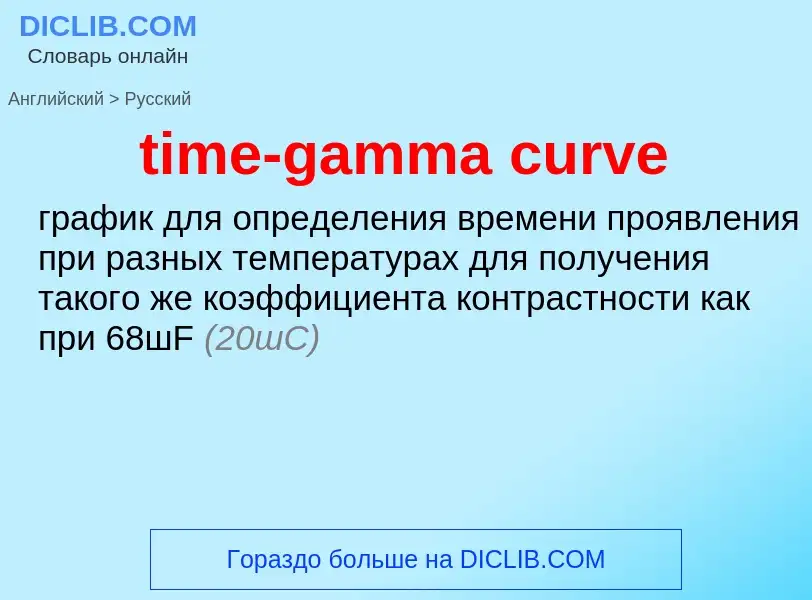Tradução e análise de palavras por inteligência artificial ChatGPT
Nesta página você pode obter uma análise detalhada de uma palavra ou frase, produzida usando a melhor tecnologia de inteligência artificial até o momento:
- como a palavra é usada
- frequência de uso
- é usado com mais frequência na fala oral ou escrita
- opções de tradução de palavras
- exemplos de uso (várias frases com tradução)
- etimologia
time-gamma curve - tradução para russo
[gæmədi'kei]
физика
гамма-распад
общая лексика
гамма-излучение
Definição
---
в музыке - звукоряд - последование всех звуков лада, расположенных от основного тона в восходящем или нисходящем порядке; имеет объем октавы, но может быть продолжена в соседние октавы. См. также Хроматическая гамма.
---
(обозначается ?) , 1) стотысячная доля эрстеда, 1 ? = 10-5 Э. 2) Редко применяемая дольная единица массы, 1 ? = 10-9 кг, чаще называют микрограммом (мкг).
Wikipédia
A learning curve is a graphical representation of the relationship between how proficient people are at a task and the amount of experience they have. Proficiency (measured on the vertical axis) usually increases with increased experience (the horizontal axis), that is to say, the more someone, groups, companies or industries perform a task, the better their performance at the task.
The common expression "a steep learning curve" is a misnomer suggesting that an activity is difficult to learn and that expending much effort does not increase proficiency by much, although a learning curve with a steep start actually represents rapid progress. In fact, the gradient of the curve has nothing to do with the overall difficulty of an activity, but expresses the expected rate of change of learning speed over time. An activity that it is easy to learn the basics of, but difficulty to gain proficiency in, may be described as having "a steep learning curve".
Learning curve may refer to a specific task or a body of knowledge. Hermann Ebbinghaus first described the learning curve in 1885 in the field of the psychology of learning, although the name did not come into use until 1903. In 1936 Theodore Paul Wright described the effect of learning on production costs in the aircraft industry. This form, in which unit cost is plotted against total production, is sometimes called an experience curve.









![Image of entire sky in 100 MeV or greater gamma rays as seen by the EGRET instrument aboard the [[CGRO]] spacecraft. Bright spots within the galactic plane are [[pulsar]]s while those above and below the plane are thought to be [[quasar]]s. Image of entire sky in 100 MeV or greater gamma rays as seen by the EGRET instrument aboard the [[CGRO]] spacecraft. Bright spots within the galactic plane are [[pulsar]]s while those above and below the plane are thought to be [[quasar]]s.](https://commons.wikimedia.org/wiki/Special:FilePath/Egret all sky gamma ray map from CGRO spacecraft.png?width=200)
![A [[hypernova]]. Artist's illustration showing the life of a [[massive star]] as [[nuclear fusion]] converts lighter elements into heavier ones. When fusion no longer generates enough pressure to counteract gravity, the star rapidly collapses to form a [[black hole]]. Theoretically, energy may be released during the collapse along the axis of rotation to form a long duration [[gamma-ray burst]]. A [[hypernova]]. Artist's illustration showing the life of a [[massive star]] as [[nuclear fusion]] converts lighter elements into heavier ones. When fusion no longer generates enough pressure to counteract gravity, the star rapidly collapses to form a [[black hole]]. Theoretically, energy may be released during the collapse along the axis of rotation to form a long duration [[gamma-ray burst]].](https://commons.wikimedia.org/wiki/Special:FilePath/Gamma ray burst.jpg?width=200)

